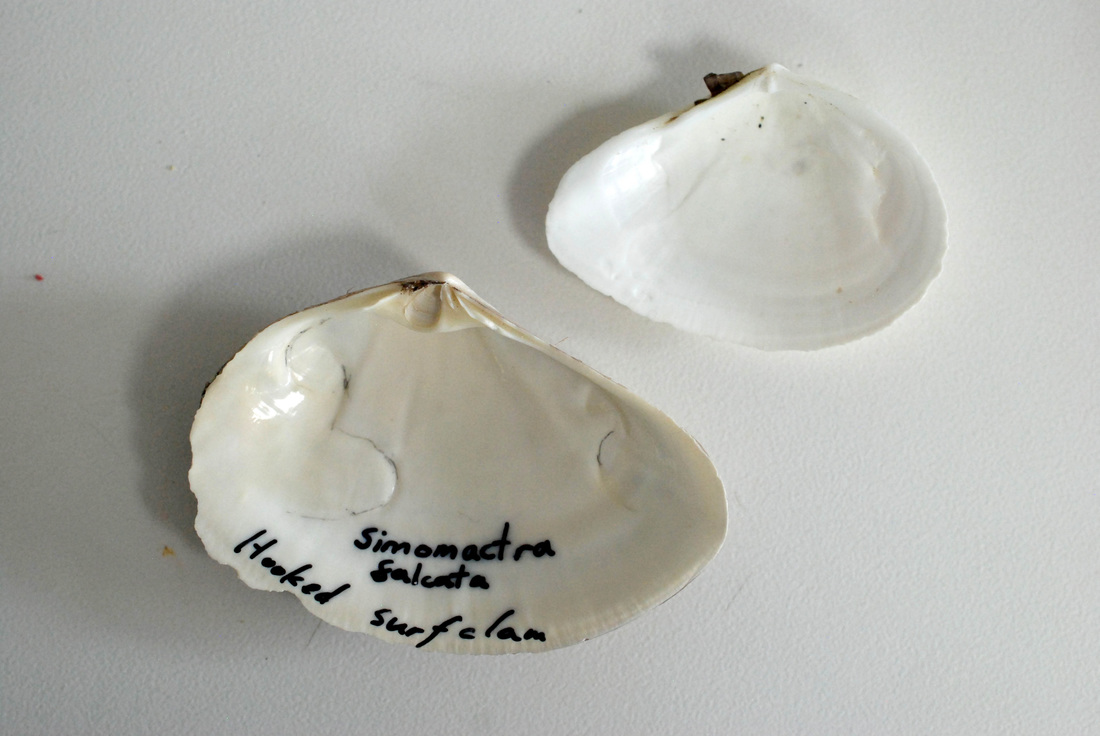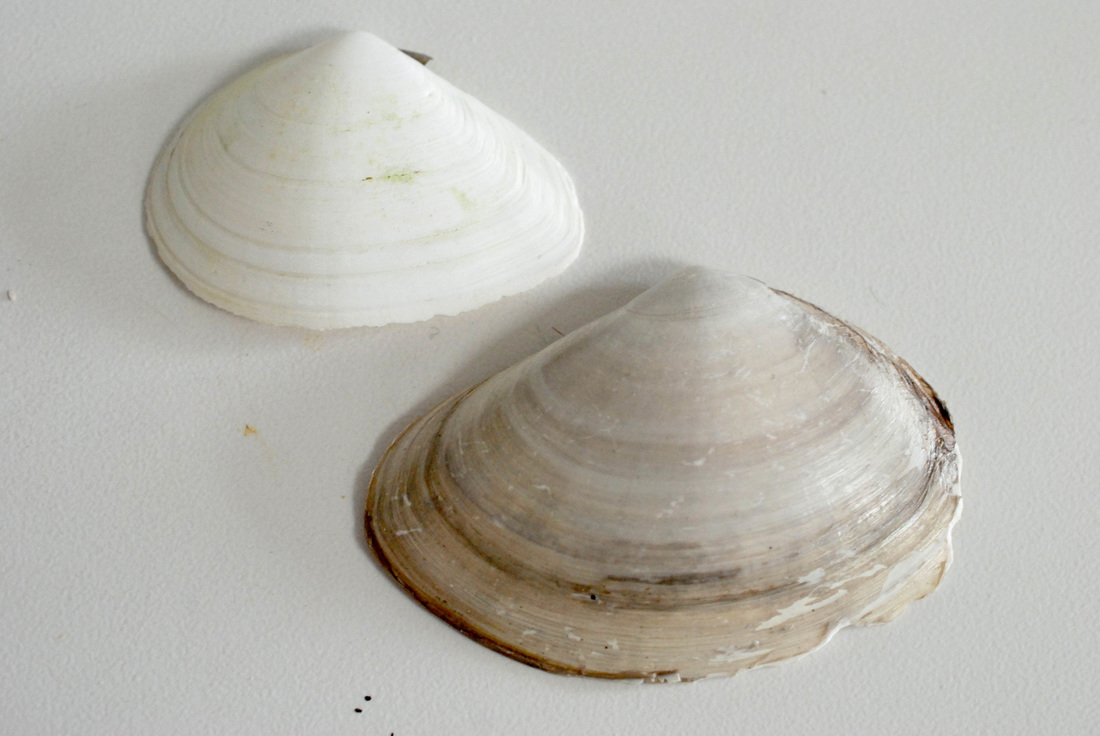Hooked surfclam • Simomactra falcata
Shell specimen from the bivalve collection at the Hakai Institute's Calvert Island field station. Photographed by Kelly Fretwell.
Identification
One end of this shell (anterior) is longer and narrower than the other, giving the shell a bit of a triangular outline. The light brown periostracum is thin and shiny. The shell gets to 10 cm across.
Habitat & Range
This clam buries itself not far beneath the surface in sandy substrates, in the intertidal and subtidal to depths of 50 m. It is mainly found along protected shorelines, and ranges from northern British Columbia to northern Mexico.
One end of this shell (anterior) is longer and narrower than the other, giving the shell a bit of a triangular outline. The light brown periostracum is thin and shiny. The shell gets to 10 cm across.
Habitat & Range
This clam buries itself not far beneath the surface in sandy substrates, in the intertidal and subtidal to depths of 50 m. It is mainly found along protected shorelines, and ranges from northern British Columbia to northern Mexico.
References
Harbo, R. M. (1997) Shells & Shellfish of the Pacific Northwest. Madeira Park, BC: Harbour Publishing. P. 153.
Lamb, A., and Hanby, B. (2005). Marine Life of the Pacific Northwest [electronic version]. Madeira Park, BC: Harbour Publishing.
Authors and editors of page
Kelly Fretwell (2017).
Harbo, R. M. (1997) Shells & Shellfish of the Pacific Northwest. Madeira Park, BC: Harbour Publishing. P. 153.
Lamb, A., and Hanby, B. (2005). Marine Life of the Pacific Northwest [electronic version]. Madeira Park, BC: Harbour Publishing.
Authors and editors of page
Kelly Fretwell (2017).






